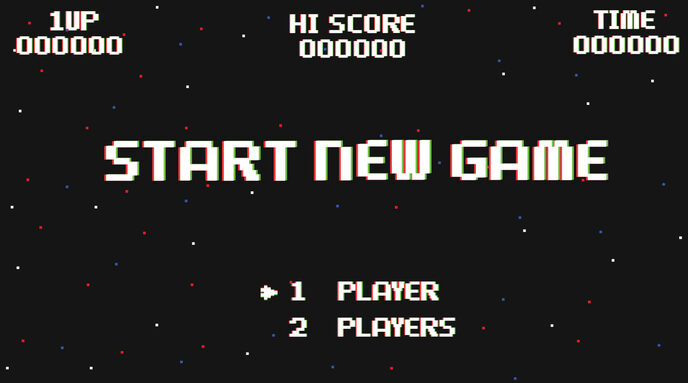How to Have Hard Conversations Without Losing Your Mind (Communication skills they should’ve taught in school—but didn’t.)
Hard conversations are the worst, aren’t they? But they’re also necessary.
You ever stare at a text for way too long, trying to figure out how to say, “Hey, we need to talk”—without making it sound like a breakup or a firing?
Or maybe you’re the type who avoids conflict like it’s a full-time job. You tell yourself, “It’s fine. It’s not a big deal.” Then six months later, you’re slamming cabinet doors and rage-washing dishes over something you never actually addressed.
Or worse—you go into a hard conversation, guns blazing, determined to win at all costs… and by the end, the relationship is even more broken than before.
Yeah. None of these approaches work.
But here’s the thing—you can’t build healthy friendships, marriages, or even a functional work environment without learning how to handle hard conversations. Life is full of them. So, you might as well get good at them. And even if you’re not “good” at it, at least you can be prepared.
And the good news? Jesus showed us how to do this really well.
Why We’re So Bad at Hard Conversations
Most of us were never taught how to handle conflict well. Instead, we default to one of three coping mechanisms:
- The Avoider: “Maybe if I ignore it, it’ll go away.” (It won’t.)
- The Exploder: “I AM GOING TO SAY ALL THE THINGS AND I AM GOING TO SAY THEM LOUDLY.”
- The Overthinker: “I need to plan this out like a courtroom case, rehearse all possible responses, and write a 17-page speech in my Notes app.”
Sound familiar?
The problem? If you’ve ever been on the other end of any of these, you know they don’t actually lead to a resolution.
Proverbs 15:1 says, “A gentle answer turns away wrath, but a harsh word stirs up anger.”
Translation? If you come in hot, expect a fire. If you come in calm, you might actually get somewhere.
How to Have a Hard Conversation Without Losing Your Mind
So how do you actually do this well? Here’s what I’ve learned:
Step 1: Check Yourself Before You Wreck Yourself
Cheeky, I know. But it’s memorable enough for you to think of in the heat of the moment.
Before you even start the conversation, ask yourself:
- Am I trying to fix something or just vent my frustration?
- Do I actually want resolution, or do I just want to be right?
- Pray first. Ask God for wisdom. James 1:19 says, “Be quick to listen, slow to speak, and slow to become angry” (Are you seeing a pattern here?).
Step 2: Don’t Start the Conversation Like a Walking Red Flag
In other words, don’t BE the problem or the instigator of an argument. That doesn’t mean that the other person won’t try to drag you into a problem or an argument. But you don’t have to go there with them, and you certainly don’t have to start it.
Some openings guarantee disaster. Example:
“We need to talk.” (Instant panic—100% chance of defensiveness.)
“I just think it’s funny how—” (No, you don’t. You’re about to start a war and you know it.)
“You do this every time.” (Nope, you don’t get to bring up someone’s past like you own it. Their past—like yours—belongs to God.)
A Better Approach:
“Hey, I’ve been thinking a lot about [issue], and I really want to understand where you’re coming from. Can we talk?” (This recognizes that you are coming from a place of misunderstanding but desire to understand.)
OR
“I really value our friendship/relationship, and I want to make sure we’re on the same page. Can we talk about [issue]?” (This reinforces care for the relationship before addressing the problem.)
OR
“I know this might be an awkward conversation, but I’d rather talk about it than let it build up. Can we chat?” (This acknowledges discomfort upfront, which helps defuse tension.)
See the difference? These are not attacks. They are an invitation that places value on the other person’s perspective. And, honestly, most people will appreciate that you value them at all. It’s a rare commodity these days.
Step 3: Actually Listen (Not Just Pretend To)
Most of us think we’re good listeners. We nod. We make eye contact. We say “mm-hmm” at the right moments.
But if we’re honest?
- We’re already planning our response while the other person is still talking.
- We’re waiting for an opening to say what we need to say.
- We’re half-listening while scrolling on our phone, nodding at the right moments.
Most of what we do is not listening. It’s just waiting to talk.
But Jesus? He actually listened.
He didn’t rush to correct, fix, or shut people down. He wasn’t waiting for His turn to talk—He was present.
When a woman who had been bleeding for 12 years touched His robe, He could have kept walking. Instead, He stopped. He turned to her. He listened to her whole story (Mark 5:25-34).
When Mary and Martha were grieving the loss of Lazarus, Jesus didn’t respond with, “It’s fine! Don’t worry, I’ll fix it.”Instead, He stood in their grief with them. He allowed them the freedom to process their feelings. Then, He cried with them (John 11:33-35).
When a sinful woman poured perfume on His feet, Jesus listened beyond words. The religious leaders were whispering about her, judging her. Jesus heard her heart, not just the noise around Him (Luke 7:36-50).
This is what real listening looks like.
- It means being fully present. Put down the phone. Make eye contact. Stop rehearsing your response.
- It means giving people space to process. Not everything needs a quick answer. Sometimes, silence and/or honest emotion is the best gift you can offer.
- It means listening beyond the words. What is this person really saying? Are they upset, afraid, feeling unheard?
Most people aren’t used to being truly heard. But when you listen well, you diffuse tension before it even has a chance to escalate.
And once you’ve actually listened? Then you can respond. Which leads to…
Step 4: Be Clear, but Be Kind
Hard conversations don’t need a dramatic monologue, but they also don’t need an attitude.
Sometimes, it’s not what you say that causes problems—it’s how you say it.
You can have the most reasonable words in the world, but if your tone is defensive, sarcastic, or dismissive, it’s over before it starts.
Think about it:
“Are you seriously bringing this up again?” (Frustrated tone = immediate shutdown.)
“Oh, so now it’s a problem?” (Sarcasm = instant escalation.)
“I mean… if that’s how you feel.” (Dismissive = makes the other person feel unheard.)
If someone came at you like that, would you feel safe being honest? Would you want to work toward a resolution?
Probably not.
Tone is everything. If you genuinely want to fix an issue, your tone has to reflect that.
A Better Approach: “I know this conversation might be tough, but I want us to figure this out together.”
A Better Approach: “I don’t want this to become a fight. I just want us to understand each other.”
It’s not about watering down the truth—it’s about making sure the way you say it doesn’t destroy the chance for resolution.
And while we’re here, let’s talk about your face. Yeah, that face.
Because sometimes, it’s not even your words or tone—it’s the LOOK.
- The eyeroll.
- The exasperated sigh.
- The smirk that says, “You’re an idiot.”
- The raised eyebrow that communicates “Wow, okay.”
Your face can betray your words. Or, it can steal any meaning from your words that you may have intended.
You can say “No, I’m not mad,” but if you say it with dead eyes and clenched teeth, nobody is buying it.
You can say “I really want to hear your side,” but if you’re staring at them like they just ruined your entire life, they’re not going to believe you.
What you say and what you show need to match. Otherwise, the other person won’t listen to your words—they’ll react to your tone and expression.
So, What’s the Fix? When you’re in a hard conversation you have to constantly check-in with yourself. Yes, it’s work (this is part of the “hard” in hard conversation). But it’s worth it.
Before you say anything, ask:
- Am I speaking in a way that invites resolution, or am I throwing fuel on the fire?
- Would I want someone to talk to me like this?
- Is my tone making this conversation harder than it needs to be?
And when you’re listening, ask yourself:
- Is my face showing that I’m engaged, or am I silently rolling my eyes in my soul?
- Am I actually open to their perspective, or am I just waiting to prove them wrong?
- Am I creating a space where they feel safe being honest?
If the goal is reconciliation, understanding, and resolution, your tone and body language need to reflect that.
Because if you’re aggressive, sarcastic, or dismissive? You may win the argument. But you’ll lose the relationship.
So, start and end with clarity and kindness.
Step 5: Accept That You Can’t Control the Outcome
This is important for you to remember:
- You can’t control how people respond.
- You can’t force someone to agree with you.
- You can’t guarantee that the conversation will go the way you want it to.
Your job is to communicate well. Their job is to decide what to do with it.
Sometimes, people will get defensive. Sometimes, they won’t change. That’s not on you.
Your responsibility? Speak the truth in love. In Ephesians 4:15, Paul tells us, “Instead, speaking the truth in love, we will grow to become in every respect the mature body of him who is the head, that is, Christ.”
I say this to my Biblical Counseling students every class, you cannot control outcomes you can only control what you give to the people in front of you. That’s in God’s hands. You just do your part and let Him worry about the rest.
Hard Conversations Are Hard—But You’re Stronger Than You Think
So, what’s the easiest thing to do when these types of conversations come up? Avoid the conversation.
What’s the hardest thing to do? Have it anyway.
And look, I get it. The temptation to avoid conflict is strong. Why dive into a potentially awkward, stressful, and emotionally draining conversation when you could just… pretend everything’s fine and watch Netflix instead? (“No issues here! Let’s just push that down deep into my soul and deal with it… never.”)
But here’s the problem with that: the thing you avoid today doesn’t actually go away—it just waits for you. The resentment simmers. The misunderstanding grows. The frustration builds until it explodes over something dumb—like who forgot to buy more coffee. (And let’s be honest, a caffeine shortage can ruin lives.)
But if you’re willing to step up, communicate well, and trust God with the results—you’ll grow.
And yes, I know what you’re thinking: “But what if I say all the right things, and it STILL goes badly?”
Here’s the truth: sometimes, it will.
Not every conversation is going to end in a hug and an inspirational movie moment. Some people won’t listen. Some won’t be ready. Some will double down on their stance, and some will just walk away more angry than they were before.
But even if it goes sideways? You’ll survive.
More than that—you’ll be better for it.
Because handling hard conversations well isn’t just about keeping the peace—it’s about becoming the kind of person who builds real, lasting, meaningful relationships.
And that? That is worth it.
So, take a deep breath. Pour yourself a cup of coffee. And the next time you feel tempted to run from a hard conversation, just remember to have:
☕ A little faith, a little courage, and a whole lot of stubborn joy. – Tonya
So—what’s a hard conversation you’ve been avoiding? Have you ever had a hard conversation go hilariously wrong? Tell me about it!
© 2025 All posts written by Tonya E. Lee








